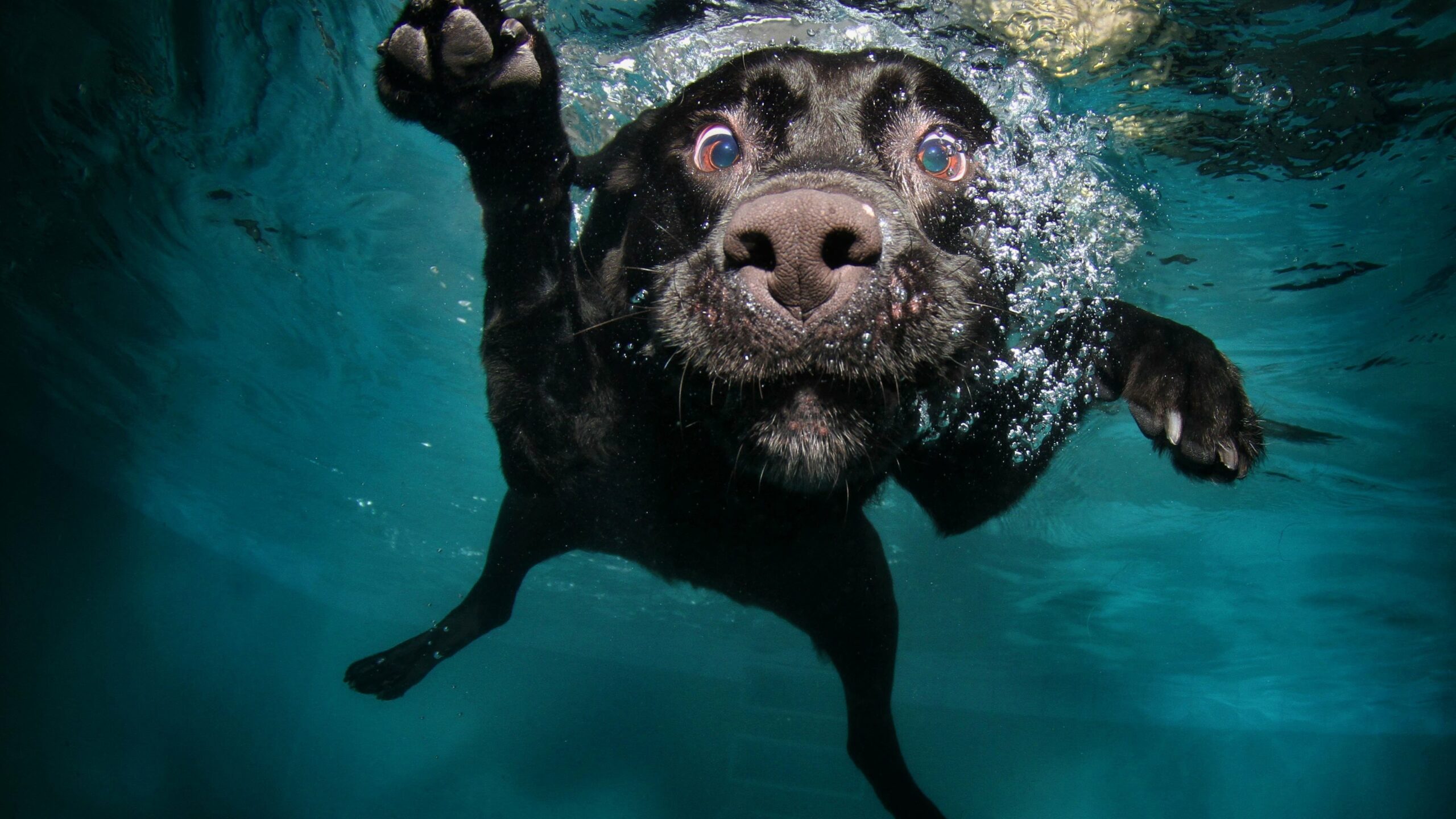As the temperature begins to skyrocket, now is the prime time for teaching your dog to swim. Swimming is an excellent way to help both you and your dog beat the Arizona heat. However, if your dog has never been swimming before, or if they are trepidatious about getting in the pool, we have tips to help swimming be a fun and safe experience for your four-legged pal!
1. Bear Breed in Mind
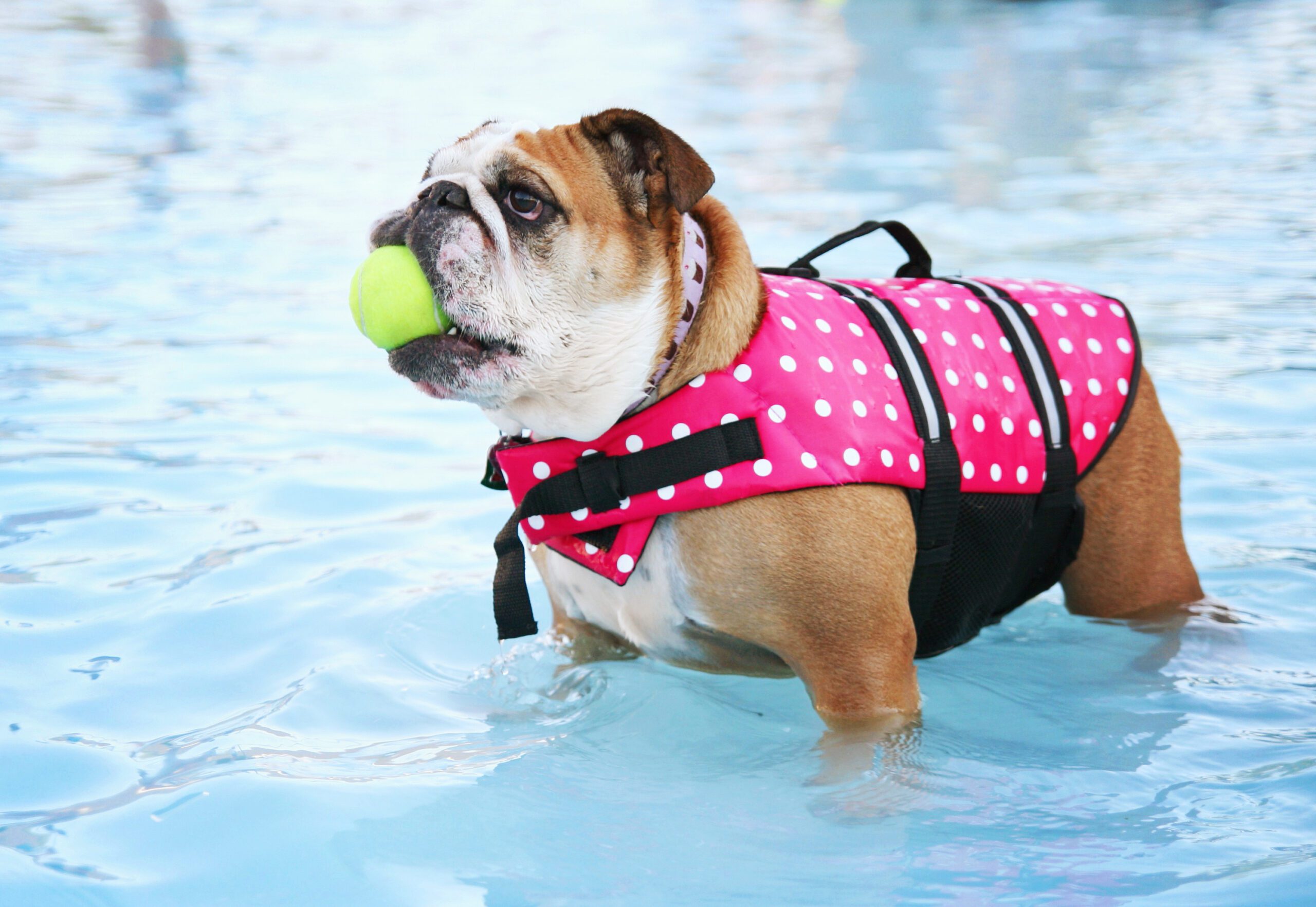
An important prerequisite before you begin teaching your dog to swim is to ensure that this exercise is the right fit for their breed. Certain breeds have physical characteristics that may make swimming difficult or impossible. Flat-faced breeds, such as Pugs, Pekingese, and Shih Tzus have difficulty keeping their heads out of the water. Breeds with short legs, like Corgis and Dachshunds, will tire out quickly. Bulldogs are unfortunately a combination of both! These breeds do not have to miss out on all the fun of swimming; they can still splash in the shallow water of a kiddie pool, lake edge, or beach. However, never allow them to swim in areas that would require their feet to leave the ground.
For certain other breeds, while they can safely swim, they may be hesitant to do so. Chihuahuas and other small dogs may be timid around a large body of water and can tire themselves out easily. Greyhounds or Chinese Crested become easily chilled, so may also avoid swimming. A handful of breeds, like Beagles, tend to simply not like it.
On the other hand, Labradors, Newfoundlands, and Poodles typically can’t get enough of the water! As with most activities, whether your dog will fall in love with swimming comes down to individual personality and proper introduction.
2. Safety First!
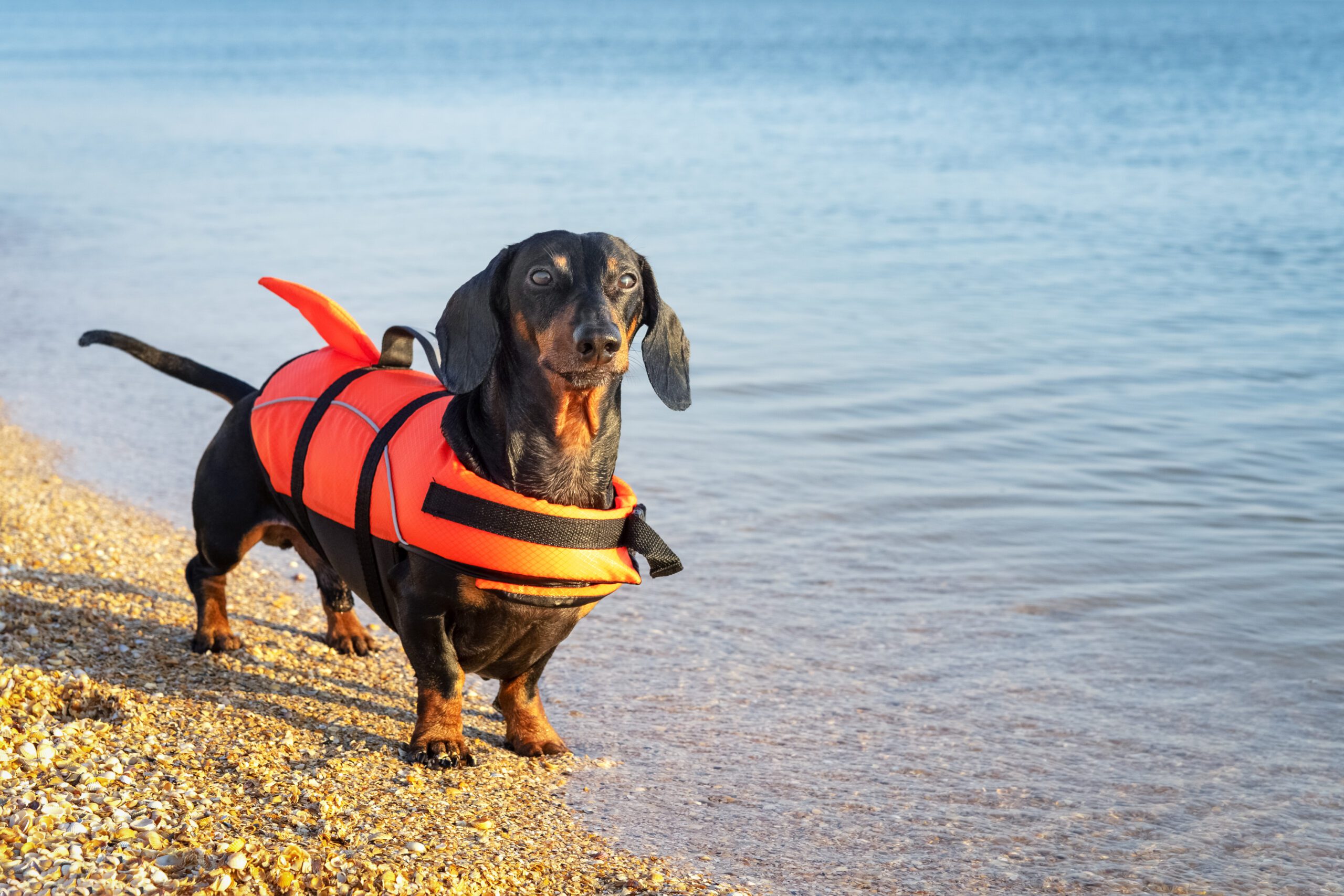
Before you dive paws-first into swimming, purchase a doggy flotation device. Not only is a flotation device important for your pet’s safety, but the extra buoyancy can boost novice swimmers’ confidence and help them become accustomed to swimming in deeper areas. Life jackets are important for both new swimmers and experienced dogs. If a dog becomes disoriented, gets overtired while swimming, or falls into deep water unexpectedly, a life jacket may prove the difference between a happy ending and tragedy.
Life jackets can range in price from about $10 up and can vary in quality. Choose a vest that will fit your dog snugly, preferably of a bright color that will allow you to keep track of him easily in the water. According to the AKC, the dog vest should also have a strong handle to allow you to guide your dog as he learns to swim or lift him out altogether if he is struggling. Beyond this, other features such as a D-ring for attaching a leash, reflective trim for swimming at night, or a cute design is entirely up to your personal preference and lifestyle!
More safety tips include never allowing your dog around bodies of water unsupervised, ensuring that the water is not too cold, being aware of any creatures in natural bodies of water, always providing them with fresh water during playtime, and limiting time spent on the hot poolside pavement. Finally, remember that dogs can get sunburned, too!
3. Start Early
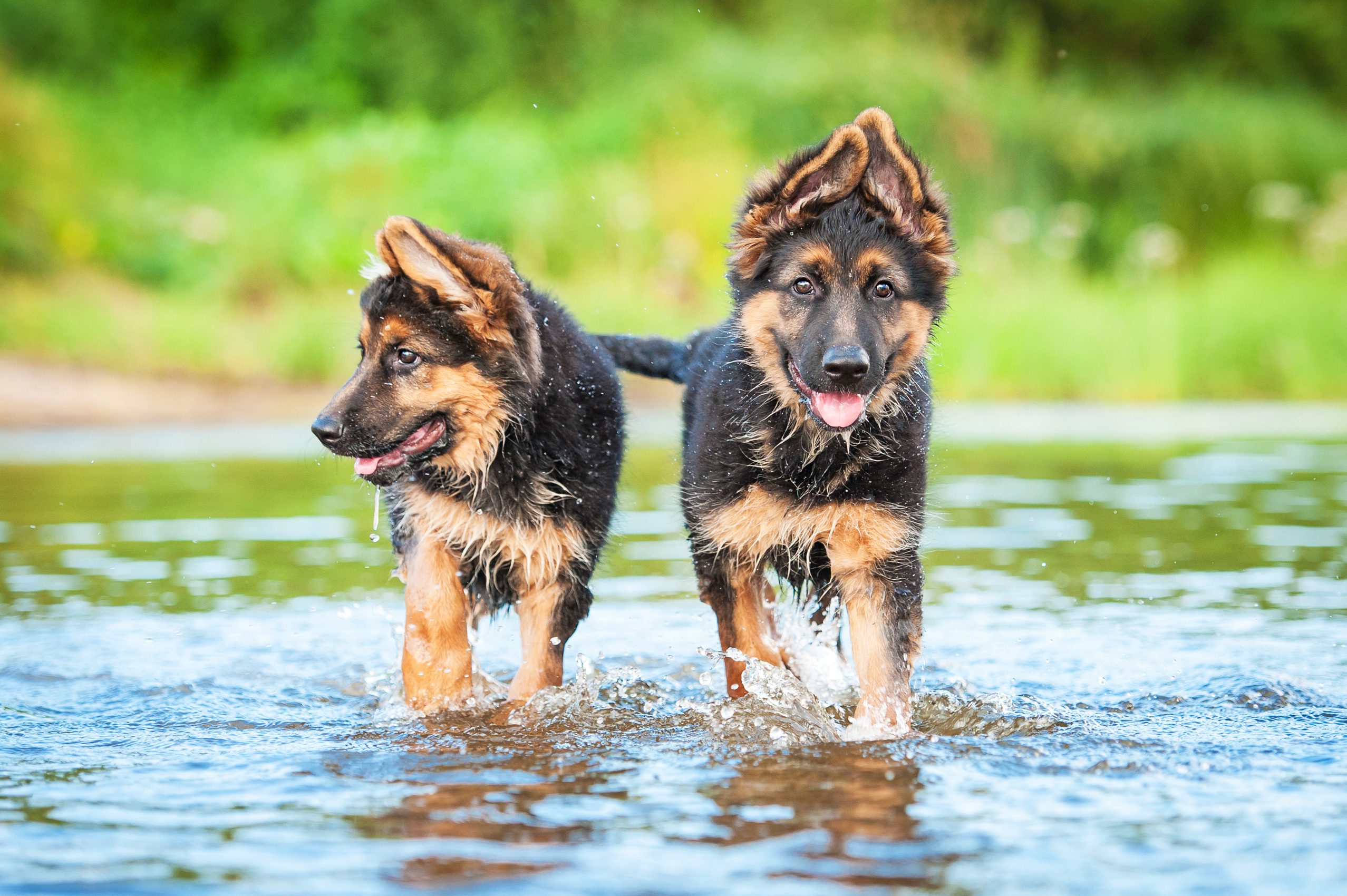 As with many aspects of socialization, the earlier that you start teaching your puppy to swim, the better! As a rule of thumb, they can be introduced to the water around ten weeks of age. Teaching puppies to swim at a young age can help them build confidence, strengthen your bond, and burn off excess energy.
As with many aspects of socialization, the earlier that you start teaching your puppy to swim, the better! As a rule of thumb, they can be introduced to the water around ten weeks of age. Teaching puppies to swim at a young age can help them build confidence, strengthen your bond, and burn off excess energy.
If your dog is no longer a puppy, don’t worry! Old dogs can learn new tricks! Teaching your dog to swim at an older age can be extremely beneficial to their health for many of the same reasons that it is good for humans. Swimming is a low-impact, therapeutic exercise that can help with weight loss, stress relief, and even pain relief.
4. Start Small
To best set your dog up for success, introduce them to swimming slowly. NEVER throw your dog into the pool to encourage them to “sink or swim”. This method of introduction is extremely stressful for your dog and will form a negative association with the water. Seek to create a positive association instead by taking them through each step gradually.
First, allow your puppy to become accustomed to wearing their life vest. Let them get comfortable with you taking it on and off. Praise and encourage them to create a positive association with wearing it.
Your next step will be to introduce them to water. Choose an area that is quiet and has minimal distractions. Set up a wading pool and fill it to about the level of the first joint of your dog’s front legs. Alternatively, set yourself up in the shallow end of your pool or in the shallows of a natural body of water. Allow your dog to thoroughly sniff around the area before you start. Then, use high-value treats to help your dog feel comfortable and content being near the water. This may take longer for some dogs than others; do not be discouraged if your first few “swimming” sessions involve minimal swimming.
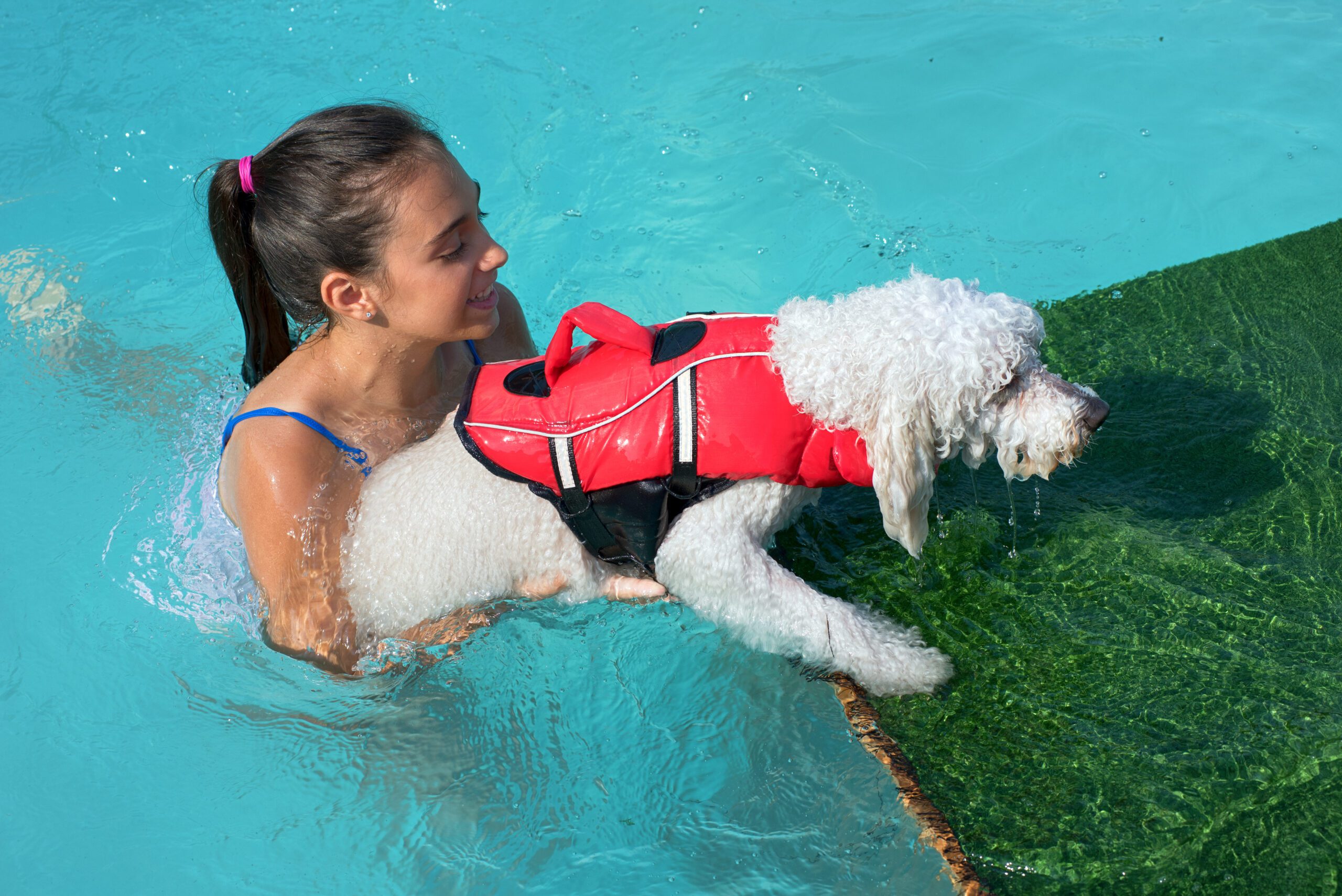
Once they seem confident standing near the water, coax them into stepping in. Use high value treats, toys, or even yourself as something to entice your dog to put their paws in the water. Different dogs value different things, so don’t be afraid to experiment to find your dog’s perfect bribe. If your dog cannot be tempted, it is all right to pick them up and place them gently in the shallow water, but if your dog appears frightened or otherwise distressed, do not push their limits too far.
For the non-swimming dogs previously outlined, wading in may be as far as they will ever progress. Conversely, water-loving dogs may need very little persuasion to launch themselves into the pool and splash around happily! For all the dogs that are somewhere in between, now that they are accustomed to having their paws wet, it is time to move onto the next step – actual swimming!
5. Build Confidence
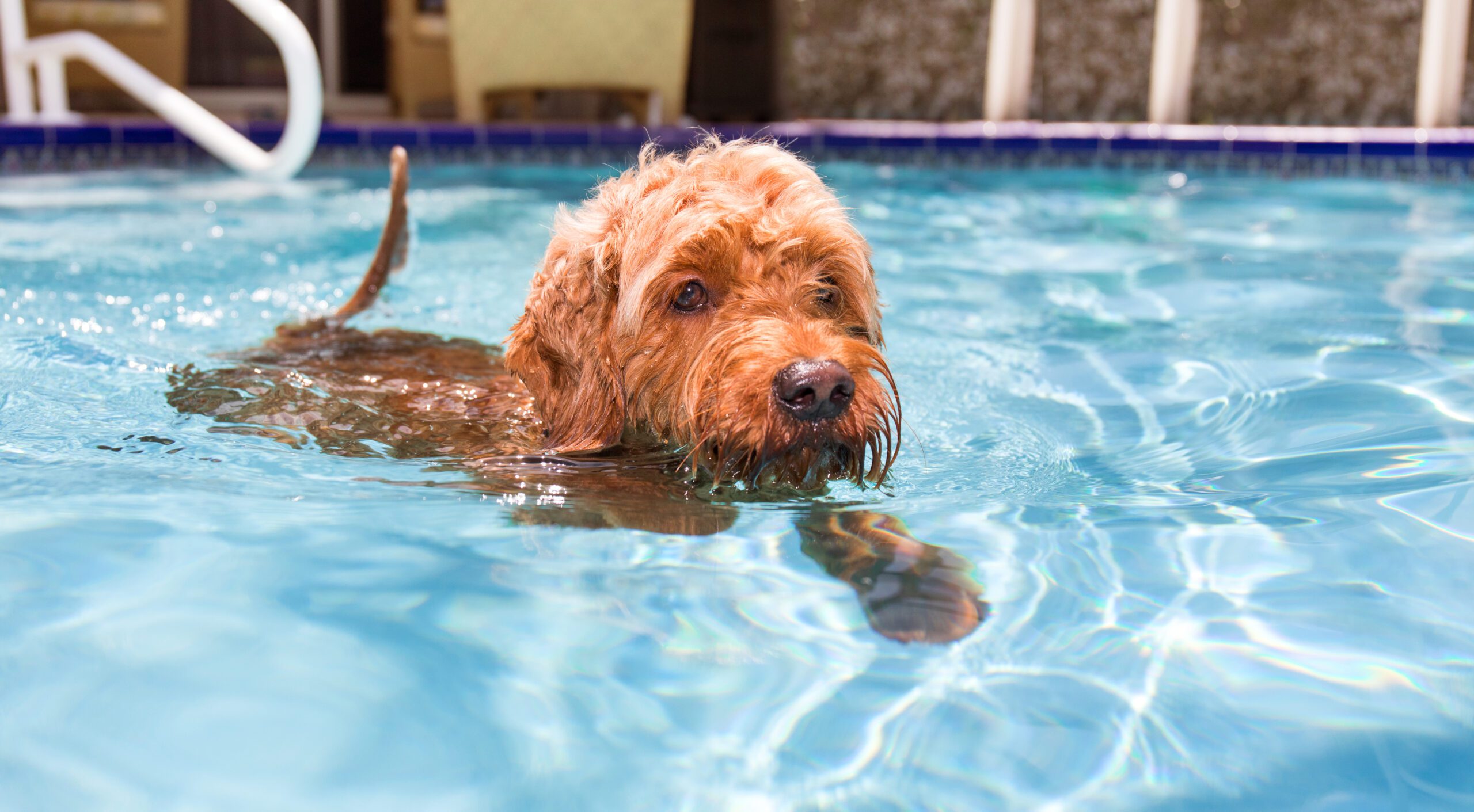
Start to guide your dog out into deeper water. Hold them by the handle on their vest or otherwise lightly support your pet. Allow them to adjust to the feeling of having their feet off the ground and swimming. Ensure that they are using all four paws to swim and not just the front two; only using the front paws wear them out prematurely. If they are not utilizing their back legs, lift their rear slightly to encourage them to do so. Also, encourage them to swim with their heads parallel to the water for optimal breathing and vision.
Take your dog a short distance away from the pool steps or shallow section of the water. Allow them to swim back to the shallow area, gradually increasing the distance. Pay close attention to your dog’s body language during this time. If they appear stiff, the whites of their eyes are visible, or they are showing other signs of distress, guide your dog back into shallow water. Speak gently to them, give them treats, praise, and pet them until they relax.
As with all training, try to end each session on a positive note. Slow progress forward is much better than pushing too hard and creating a negative association with this activity.
Remember that, while it does not feel strenuous, swimming is a lot of work! In fact, one minute of swimming equates to four minutes of running for dogs! It’s great if your dog is having fun, but make sure that they do not wear themselves out. Try to keep sessions limited to around ten minutes to avoid your puppy becoming too tired.
If training on your own is not working, another option to consider is group training classes. A confident swimmer can give a timid dog reassurance by modeling swimming for them. Group classes are also an excellent opportunity to learn from fellow dog-owners and instructors.
6. Play Games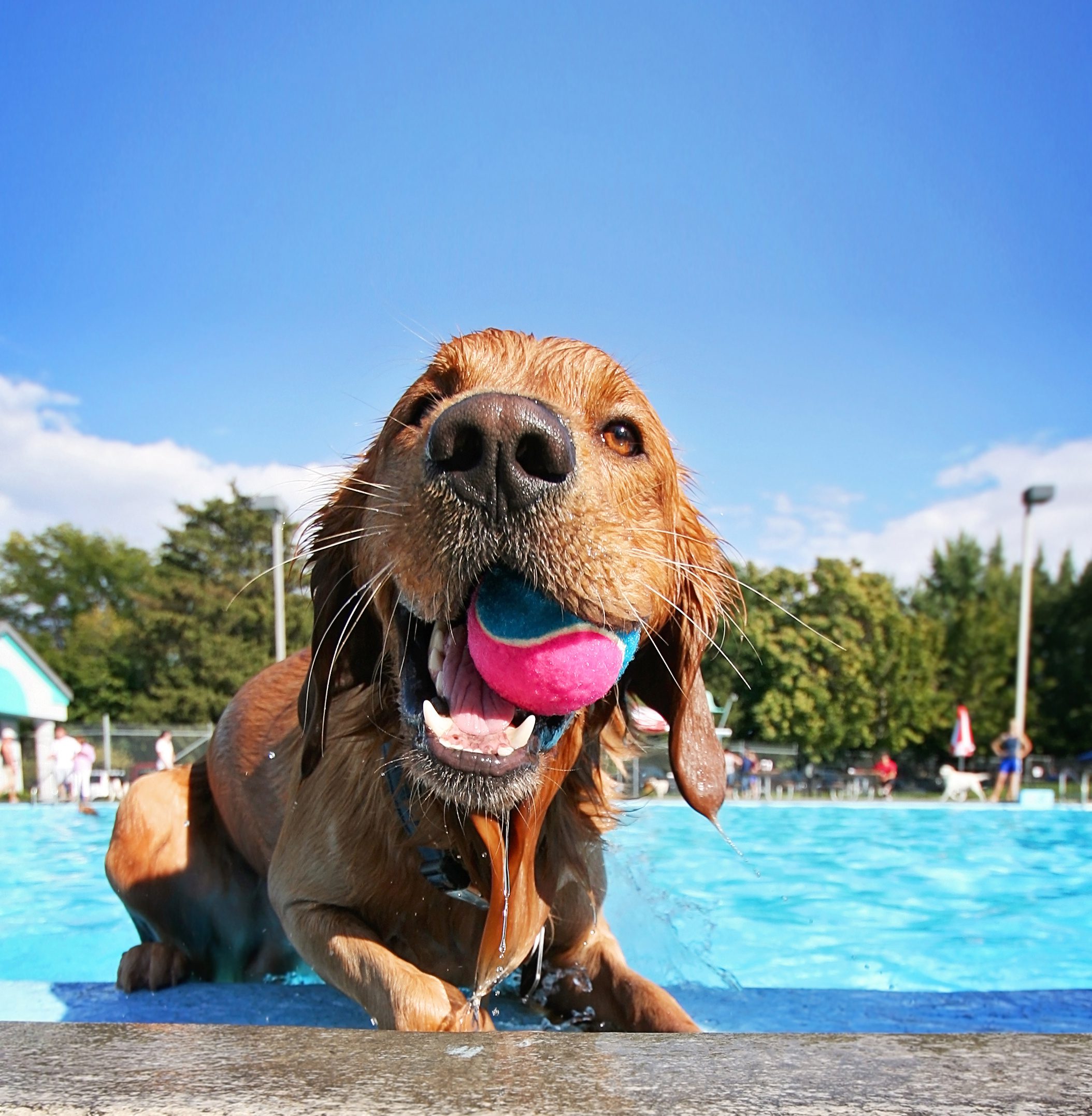
Congratulations! Your dog is now a comfortable swimmer! It is time to start having fun! Aside from simply swimming with your dog, there are so many water-based games that you can play with them. Try teaching them to dive for sinking toys, playing fetch, hanging out on rafts, and much more! Invite some dog pals over and have a fun-filled pool party!
Check out these sources for ideas on having fun with your dog in the water this summer.
First Aid & Water Emergencies
If you are out at the lake or beach, always have some first aid items with you just in case your puppy steps on a sharp object and cuts or tears their pad or paw. Clean the area and then put pressure on the pad if bleeding and then wrap it until you can get to a veterinarian (if it is a serious cut that will need stitches). Please remember dog pads do bleed a lot, even a small cut can bleed. If it is just a small abrasion, treat it with a little antibiotic ointment and wrap it until you get home and it can stay clean.
If drowning or near-drowning does occur in cold water, remove the dog from the water but do not warm them up. Do not turn the pup upside down or do abdominal thrusts as these may cause the dog to breathe vomit into the lungs. Obviously if there is no heartbeat then it is advisable to perform CPR, but then transport your puppy immediately to the Veterinarian Emergency Room as near-drowning can cause a fluid build up in the lungs in the next 24-48 hours so it is important to have a vet examine your pup even if he seems stable and watch for infections as they recover since water can carry bacteria and fungi that might develop into pneumonia.
Of course, have a fun, safe summer in the water!
